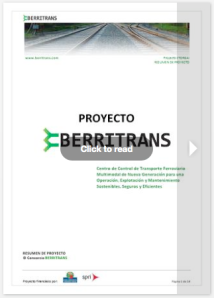The Basque Country, which is on the periphery of the European Union, has seen in recent years how the Union centre of gravity has moved away from its frontiers due to the incorporation of countries from Central and Eastern Europe. As a result, a powerful infrastructure network and added value systems, which support the maintenance of economic activity while remaining environmental friendly and respecting sustainable growth in the territory, are essential. This is one of the main factors which dynamited investment in different transport sectors and large infrastructures. In recent years, great investments have been made from both the public (main strategic agendas orienting European, national, regional funds, etc.) and private sectors, from large, small and medium sized companies to maintain the position within the European framework.
The large transport infrastructures built today require advanced safe intelligent management for their correct use. These new management, operation, maintenance and safety systems required to manage the infrastructures aim to provide greater safety at all levels – physical, logical and environmental – to prevent, avoid and minimize the number of accidents and incidents, which might jeopardize the integrity of the infrastructure, people; and in addition, offer a transport service pursuant to end customers/users demands and needs (both passengers and merchandise).
Even though, the BERRITRANS project arose with the idea of being applied to different means of transport, i.e. passengers and transport, the railway was initially chosen as it is one of those which all European, national or regional transport policies wish to foster. To this effect, this project consortium considers this sector to be strategic and driving, so the results allow their immediate extrapolation to road, sea and even air transport.
The railway transport context has varied greatly in recent decades. These changes have meant the worldwide proliferation of railway infrastructures and a great investment spreading internationally through Europe, the US, Asia, etc., to foster sustainable transport, which was in recession due to the little investment made during the last 80 years. Therefore, the desire is to move on from a situation where railway networks operated with obsolete technologies and speeds of 50 years ago, towards a new framework where the connectivity between the different infrastructures and railway operation must be safe and modern. This implies the need to develop new solutions providing a response to these new needs: greater speed, greater safety, integration of different railway operators and agents, greater end client orientation; all of which must be done efficiently and be environment friendly.
Therefore, a new centralized model system is required for control centres to help railway transport management, operation and maintenance, not to mention its future integration with other means of transport for integral management of new transport installations and services.


